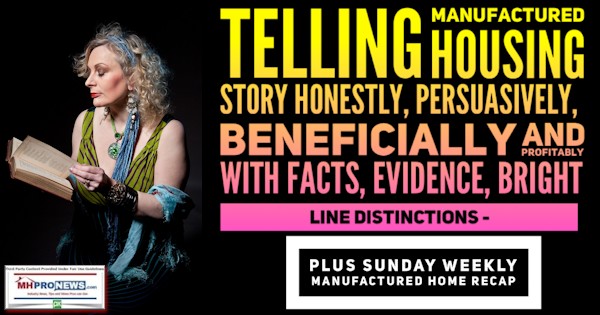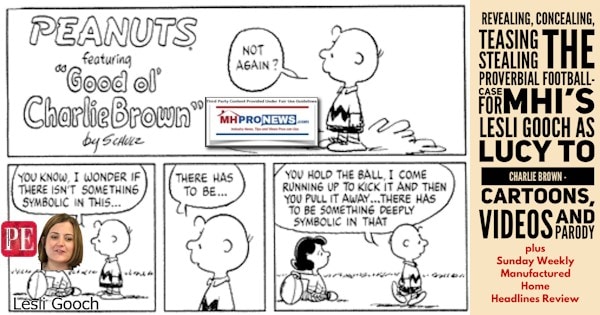
Any effort to draw parallels between manufactured housing and the buggy whip industry should be attributed to colorful metaphors rather than to a serious argument. For those with a dozen years or less of service in some professional aspect of manufactured housing, they have only known the industry at its lowest ebb in decades. The paltry performance in most of the 21st century hardly seems logical, given that the affordable housing crisis has been steadily growing for years. Some in mainstream media, certain nonprofits, researchers at institutions of higher learning, in the financial sector, or public officials in various capacities have produced some worthwhile studies that sheds light on the epic underperformance of manufactured housing in the 21st century. But the case can be made that the most comprehensive, nonpartisan view of this underperformance can only be found by reading several of the fact-packed and evidence-laced reports found on MHLivingNews and/or MHProNews.
Evidence for that claim can be found in articles like the one linked below.
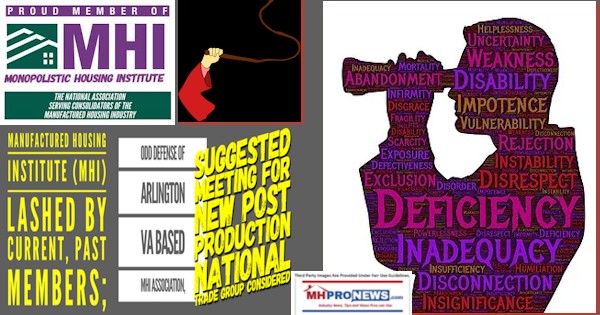
More evidence is spotlighted in the surprising facts that have emerged since the Wisconsin Housing Alliance launched their marketing campaign, which has been credited to services provided by Manufactured Housing Institute (MHI) member ManufacturedHomes.com.

Note that the vexing results from the above effort were not limited to that state. The Florida Manufactured Housing Association (FMHA) and BowStern marketing had similar outcomes.
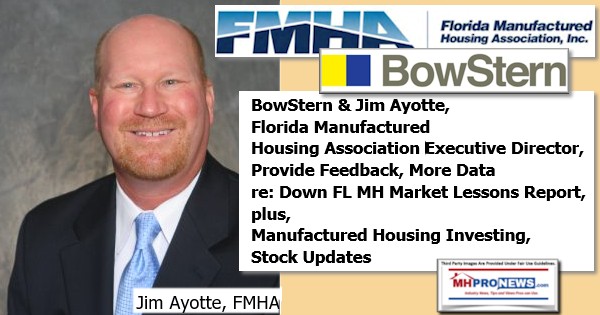
Despite the boasting of high levels of traffic by MHVillage, it should be noted that they too – when their own claims are examined – have had flaccid results.
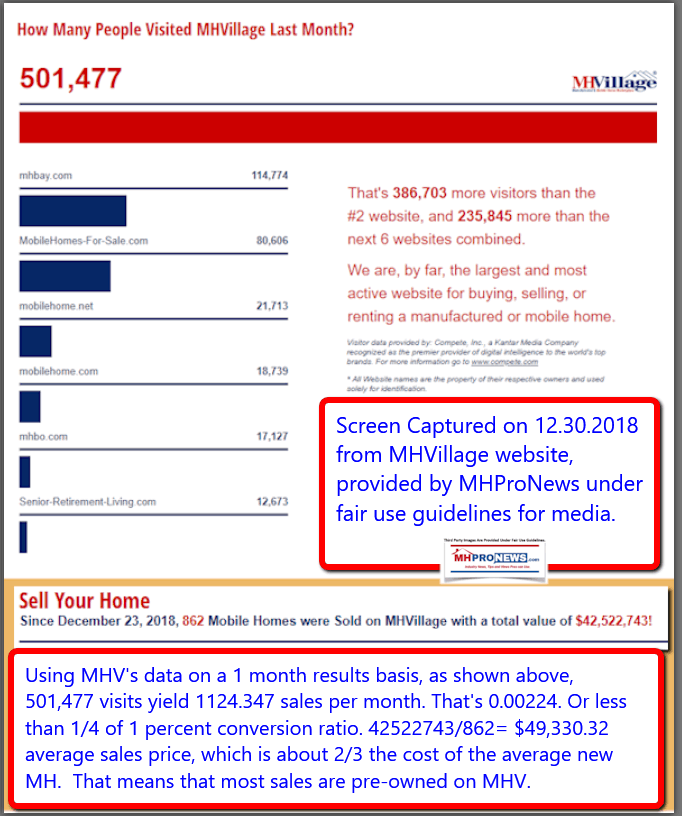
How to understand the problematic pattern that the facts, evidence, and expert viewpoints (i.e.: expert opinions) in the above linked reports reveal?
Perhaps the pithiest published statement is the one found on the FHFA listening session website at this link here.
That statement on the FHFA website hot links evidence. So, while it can be labeled as an expert opinion, it is opinion based upon facts and a range of expert viewpoints. The statement opens with these words between quotation marks: “A Pimple on an Elephant’s Ass.” In 1427 words, or about 12 minutes of reading for a typical adult, the now 1 year old “Pimple” overview presents an array of statements with linked sources and evidence that include MHI, MHI members, third-party researchers, MHARR, the FHFA, and so on.
MHI was ‘present’ at that virtual FHFA session when it was being presented. They and their outside attorneys or corporate leaders were repeatedly given an opportunity to respond to those published concerns.
MHI et al declined to respond every time. While that isn’t 100 percent conclusive evidence that they have been proven wrong, it is prima facie evidence that they are unwilling or unable to refute the allegations against their so-called manufactured housing industry leadership.
Some people are demonstrably comfortable with lying, misleading spin, paltering, or what the evidence-driven Capital Research Center (CRC) has labeled as the category of “Deception and Misdirection.” But it would be fair to say that millions are not comfortable with such tactics. Most people take a dim view of repeated liars and con artists, with good reason. Furthermore, to those who don’t palter themselves, brazen lies, half-truths, fraud, and various forms of deception are difficult to imagine at the level necessary to grasp what has gone wrong with manufactured housing.
Because at its essence, the case against MHI and their dominating brands ‘leadership’ is stunningly simple.
The data arguably demonstrates that MHI has for over 2 decades failed to achieve or do what they have repeatedly claimed they do on behalf of “all segments” of the manufactured housing industry. They can’t have it both ways. MHI can’t claim to have clout, and then fail to demonstrate in a measurable way how their clout has obtained positive achievements.
If MHI has clout, why haven’t they used it to fulfill their own federally filed mission statement?
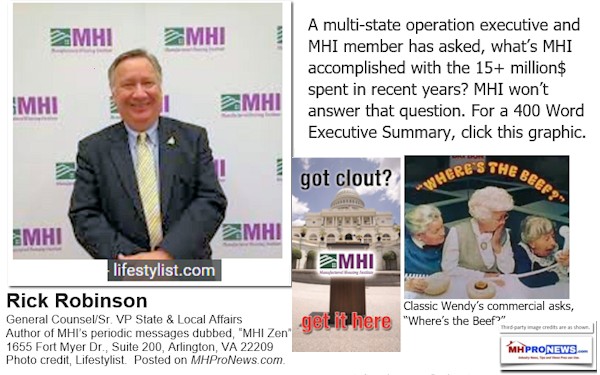
An MHI insider recently launched into a profanity laced tired to MHProNews about the Arlington, VA based trade group.
MHI’s response to the above? Silence. While it is British maxim, not American one, to assert that “silence betokens consent,” it is a point sometimes used effectively in debates. If someone doesn’t respond to serious allegations, there is at least a question that arises in the minds of thoughtful people if the charges made are therefore true.
What Explains MHI’s Lack of Effectiveness at Their Own Stated Goals?
For some time, as MHProNews has periodically reminded readers, MHI has asserted to the IRS in their required 990 filing that their goal is to grow the industry’s performance in the marketplace. Per their signed statement below, which their executive committee offers have to give consent to, this is how MHI described their mission: “Improve the overall operating environment for the manufactured housing industry and expand demand for manufactured homes by seeking fair and equitable treatment in the marketplace and the regulatory and legislative arenas.” While it is in all caps in the screen capture below, the text is as shown in the bold-for-emphasis above.

Without going into too much detail, given various MHI leader’s own statements, the steps needed to accomplish those goals in their 990 are clearcut. They are summed up in the letters, P.E.P. – “Protect, Educate, Promote.” That P.E.P. statement came from an MHI affiliated state executive.
To elaborate:
- MHI should insist that existing and favorable federal laws for manufactured housing are fully and properly enforced. Once more, they can’t have it both ways. Given that they have asserted several times that they want a given law enforced, which they have done numerous times over the years, then how do MHI leaders hope to explain their failure to sue to get those laws enforced? Similarly, why work to pass new laws, when the existing law have not yet been properly enforced, as MHI themselves admit? MHI can’t have it both ways.
- Kevin Clayton and others involved at MHI have said from time to time that they will promote the industry. But time and again, those promises have apparently gone unfulfilled. Yet, by comparison, educational and promotional efforts caused the recreational vehicle (RV) industry to go from trailing manufactured housing (MH) production and shipments by a ratio of some 3 MH to 2 RVs in 1998. In 2021, RVs outsold MH by more than 5 to 1. Yet, the cost per square foot for an RV is routinely higher than the cost per square foot for an MH. RVs are routinely vacation use only. Meanwhile, MH is affordable housing normally used as a primary residence. Thus, if MHI meant what they said, what happened to those promises of promotion of manufactured housing? Or, on the other hand, if MHI didn’t mean what they said, aren’t they brazen liars using stall- and shell-game tactic confidence (con) games? If MHI leadership were a group made up of unintelligent individuals with no experience at anything of merit, one might ponder if they were merely incompetent. But given their self-touted degrees and life experiences, that excuse for MHI’s failure to perform their own mission (see their IRS Form 990 above) simply can’t hold water.
- Not only has MHI eschewed the wisdom of P.E.P. robustly and consistently applied, but they have also seemingly mislead their own rank-and-file members several times. Why would MHI deliberately deceive their own members? Hold that thought, but for evidence, see the report linked below. This is hard evidence difficult for MHI to dispute, given that it is a CSPAN video and a CSPAN transcript of that video.
Last Sunday, MHProNews highlighted a video interview of MHI CEO Lesli Gooch and their President Mark Bowersox. At the time, there were only 13 views months after it was first posted. It is an obvious embarrassment, since it implies that MHI’s own staff didn’t bother to watch the puff-piece.
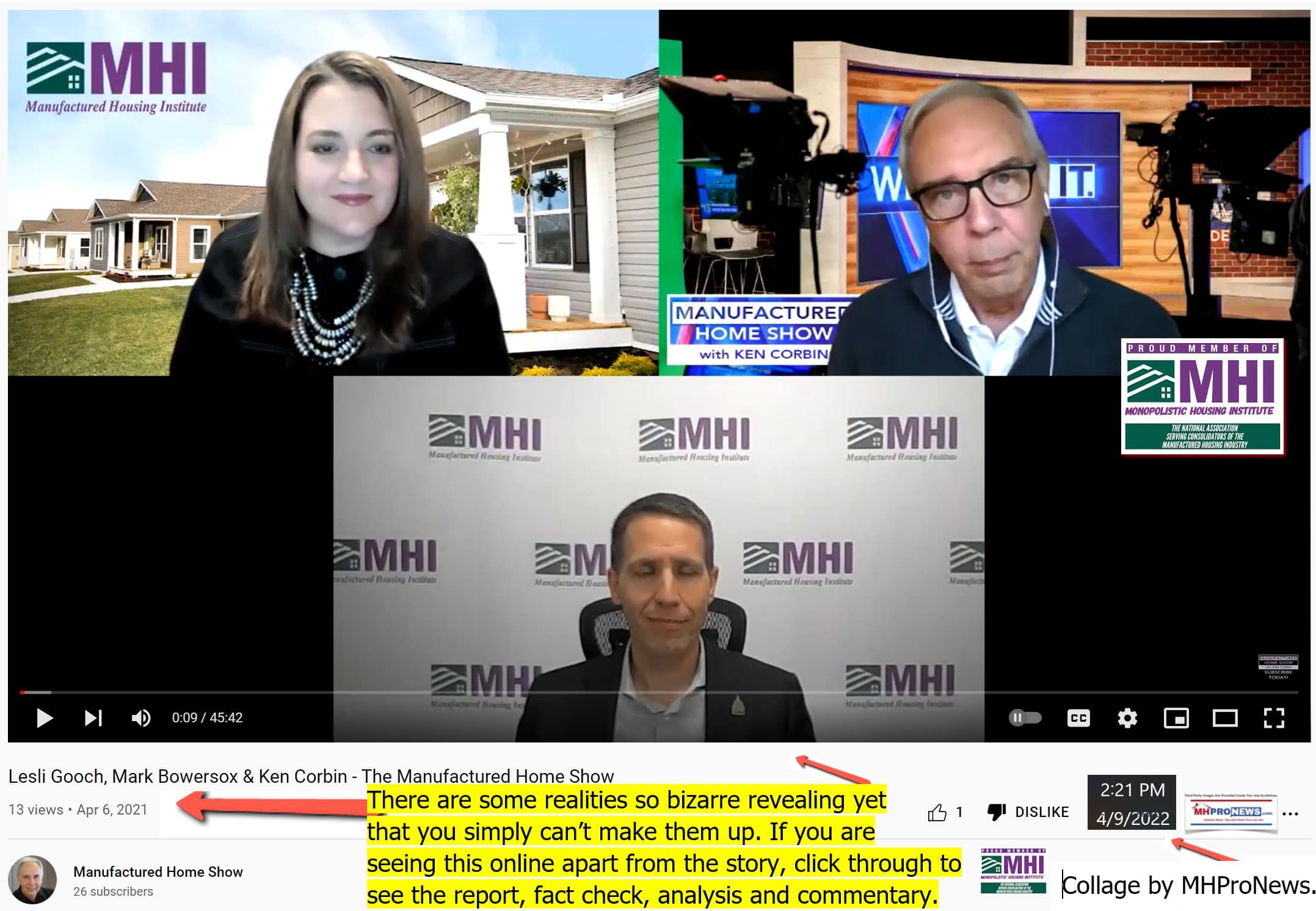
But once MHProNews highlighted that video above, there is still virtually no interest in hearing what Gooch and Bowersox had to say.
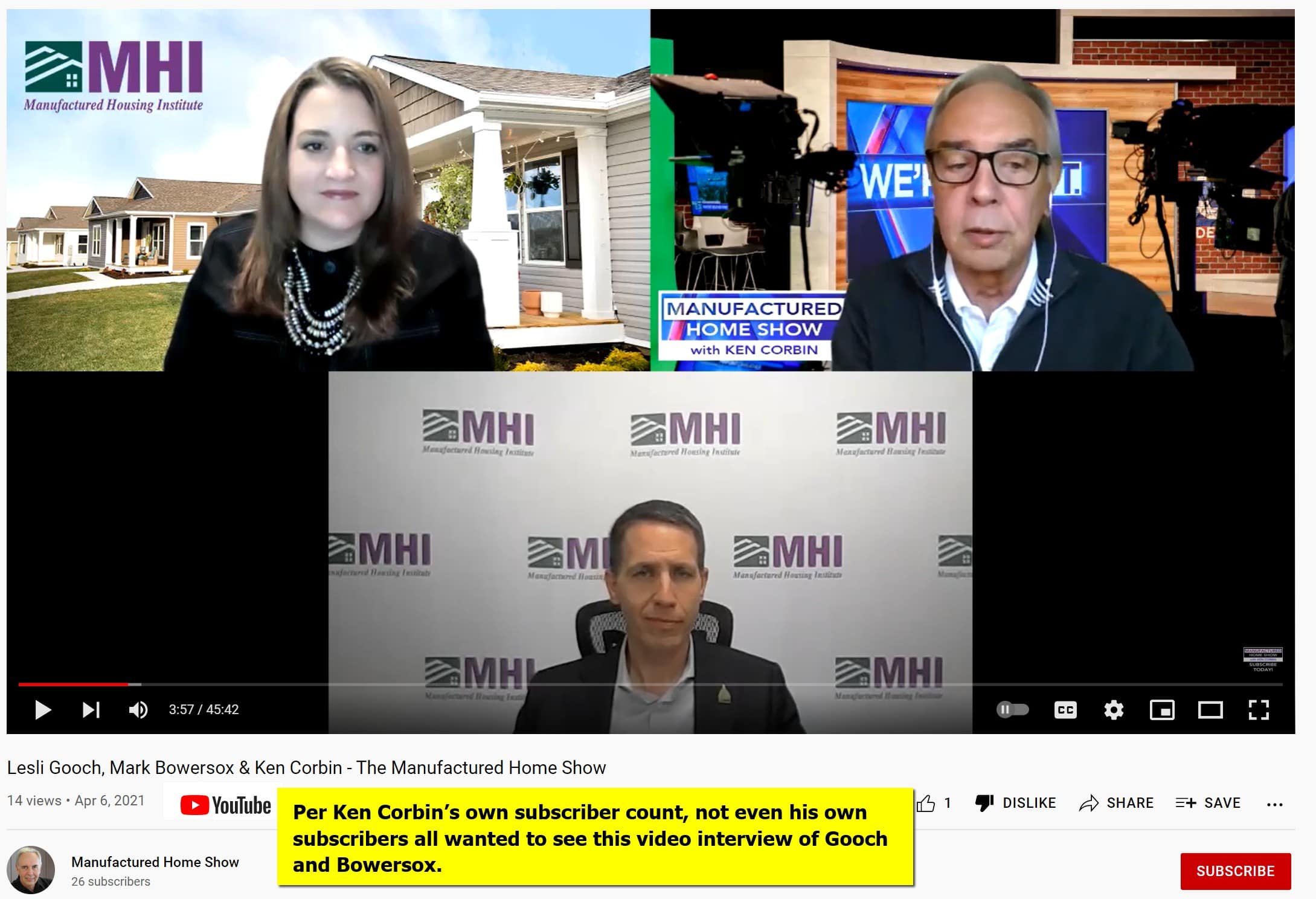
Even Corbin’s reported 26 subscribers apparently haven’t watched the video interview. Perhaps the question is, why should they? What has MHI accomplished since 2008 when HERA and DTS were enacted, which certainly has to be credited in part to MHARR?
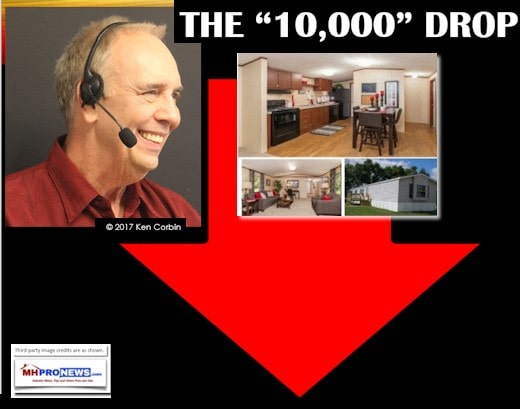
A Democratic lawmaker’s staffer told MHProNews that on Capitol Hill, MHI is viewed as being anti-consumer. If that is an accurate claim, how does that help manufactured housing achieve the goals that MHI’s 990 say is their mission?
What Explains MHI’s Years of Apparent Failure?
Broadly speaking, there are two schools of thought to explain why manufactured housing is underperforming during an affordable housing crisis, especially when someone grasps that Congress passed two specific laws by widely bipartisan margins that aimed at providing the regulatory and financial support needed for the industry to thrive.
- One of those schools of thought pins the blame on public officials and NIMBY thinking by constituents who fear manufactured housing for demonstrably disprovable (meaning, wrongheaded) reasons.
a). But when examined in the light of the Manufactured Housing Improvement Act (MHIA) of 2000, or the Duty to Serve (DTS) Manufactured Housing, Rural, and Underserved Markets passed into law as part of the Housing and Economic Recovery Act (HERA) of 2008, that argument is to some extent hobbled. Why? Because the largest national trade group in manufactured housing, as they themselves point out, is the Manufactured Housing Institute (MHI). Once you have legislation that is favorable in place, the question then becomes one of enforcement of those federal laws (MHIA, DTS, and others that already existed).
b). Restated, while local, state, and/or federal officials – or NIMBY thinking – is a legitimate challenge for manufactured housing, at a minimum, someone must ask. Why hasn’t MHI years ago used their legal resources to take one or more local towns, or HUD, the FHFA, Fannie Mae, Freddie Mac, or Ginnie Mae (to name but a few) to court to get the industry’s rights enforced? Meaning that logically, at a minimum, while public officials, negative media, or NIMBY thinking may be part of the problem, it can’t possibly explain the entire problem.
c). James A. “Jim” Schmitz Jr. and his research colleagues at the Minneapolis Federal Reserve are arguably more in this school of thought, or at least they have been. It remains to be seen what Schmitz and his colleagues may or may not say about forces inside manufactured housing in the upcoming antitrust-connected Request for Information (RFI), or if they will stick to their evidence-based argument that builders and HUD bear much of the blame for manufactured housing’s 21st century underperformance.
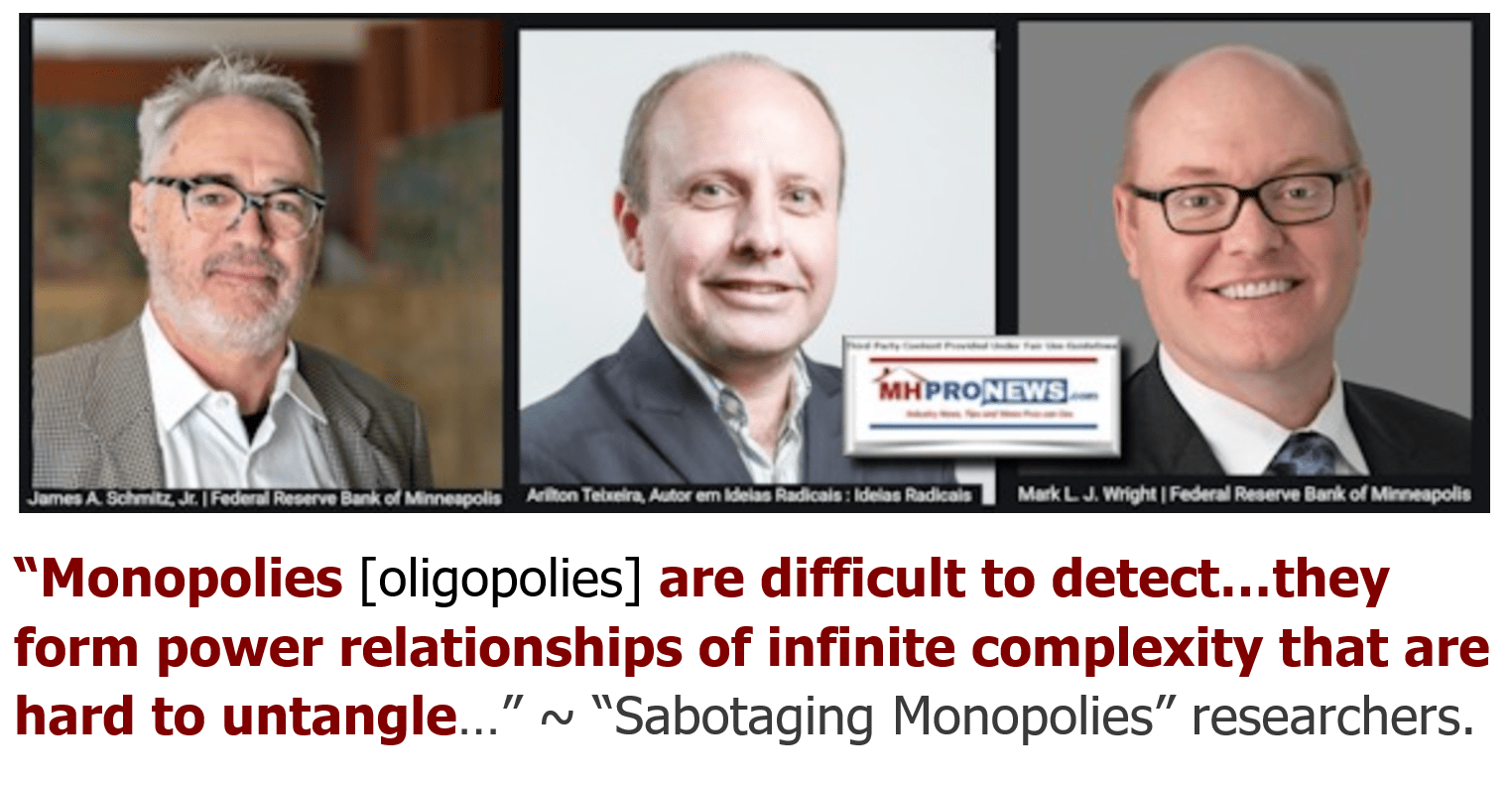
- The other contention is that some combination of forces inside of manufactured housing bear some share of the responsibility for the manufactured home industry’s underperformance in the 21st century.
a). In this school of thought, the evidence suggests that the Manufactured Housing Association for Regulatory Reform (MHARR), a producers trade group that represents generally smaller independents as opposed to the dominating brands found in the larger MHI. MHI, it should be noted, is both a post-production (retail, finance, communities, installers, transporters, etc.) and production elements; or as MHI frames it, they represent “all segments” of manufactured housing. They also claim to represent “all segments” of factory-built housing. To the extend that MHI members also produce modular homes, there is a rationale for that pitch. But the reality is that factory built housing also includes panelized, container housing, and an array of other types of production that include transportable tiny houses. MHI’s stronger claim is that they represent aspects of manufactured housing and some modular builders too. But even the “all segments” claim is erroneous. Why? Because MHI clearly doesn’t speak for consumers and the roughly 22 million current manufactured homeowners and mobile homeowners.
b). MHProNews and MHLivingNews are in this school of thought.
c). Samuel “Sam” Strommen with Knudson Law has made his case that forces inside of manufactured housing are to blame, but in his well footnoted research, Strommen mentions the role those federal agencies and others have played too.
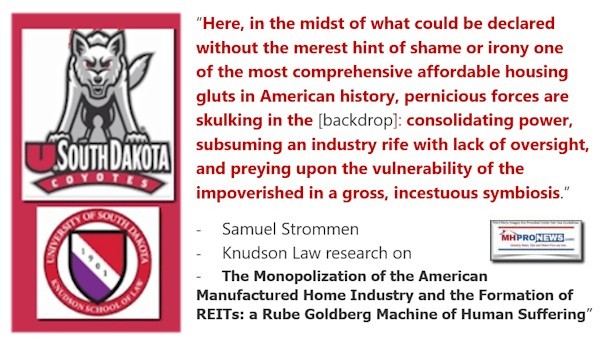
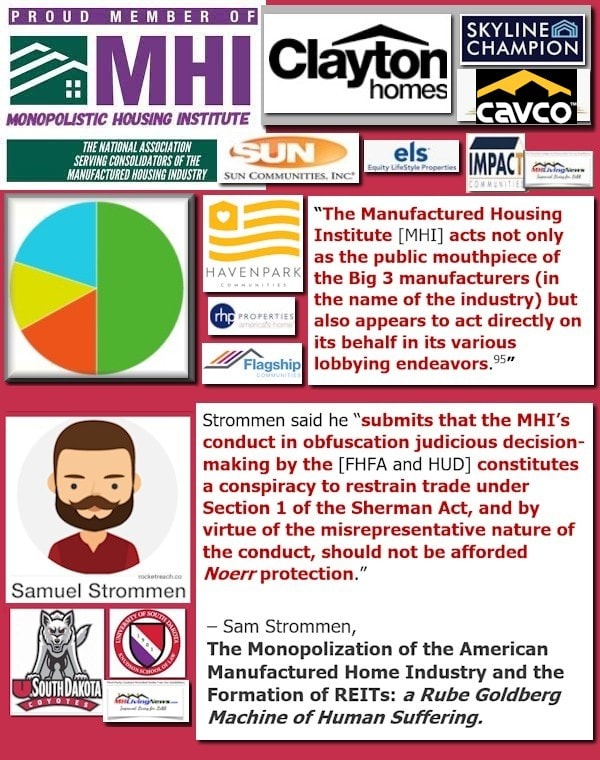
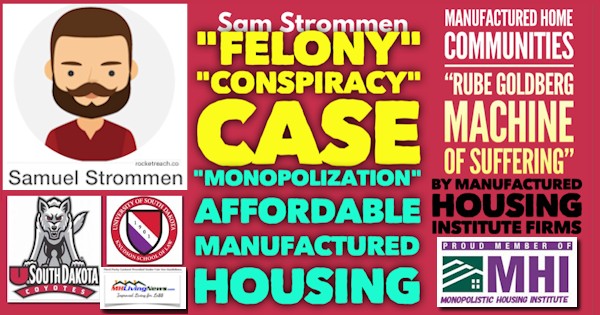
Certainly, much research and reporting has been done on manufactured housing in the 21st century. MHI has de facto admitted on several occasions that the industry’s image is a problem. In making that acknowledgement, MHI has often talked about launching and educational/image/public relations campaign. None worth talking about has ever emerged. This is despite the fact that Kevin Clayton, certainly one of the most powerful voices at MHI, said in 2011 that “the industry” was ‘ready’ to launch such a campaign back then. If so, what happened?
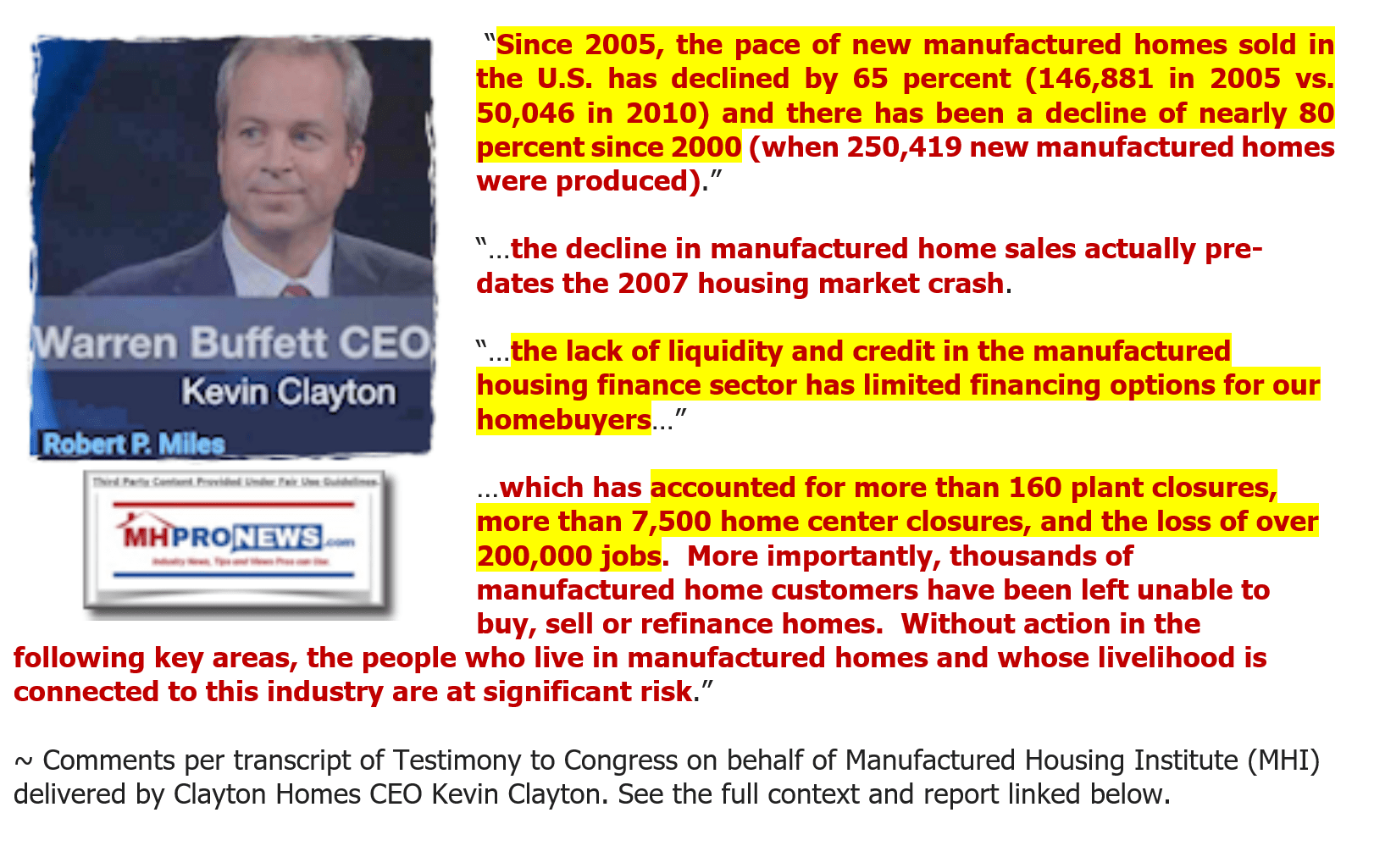
MHI award-winner Suzanne Felber and periodic cheerleader for that Arlington, VA based trade group has used the moniker “the Lifestylist”®. She ballyhooed MHI’s social media campaign, as the report below details. But as that report reflects, the industry’s production went down during some of the years since that MHI social media “campaign” was touted. That’s hardly an outcome worth bragging about, is it?
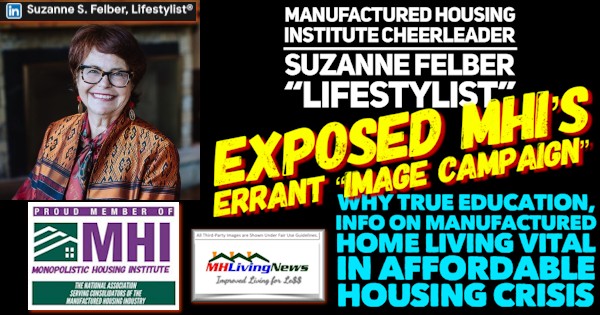
It appears that in order to be a blogger or publisher as well as an MHI member in good standing, once must tout the MHI ‘party line.’ Questioning the effectiveness of the trade group consistently enough and long enough is to invite someone’s removal from their ranks. Why is that statement made?
It is simple enough to explain. Despite what David Goch, an outside attorney for MHI has said, the group does not want differing views in their association. That can be asserted with a high degree of certainty, because when this trade media publicly questioned the ethics of MHI’s former president and CEO Richard “Dick” Jennison and then EVP (now, CEO) Lesli Gooch, Tim Williams, president and CEO of Berkshire Hathaway owned 21st Mortgage Corporation arranged for a vote in support of Jennison. This despite clear cut evidence from another CSPAN video that a carefully massaged report was presented to MHI’s members, apparently after Jennison and Gooch signed off on it.
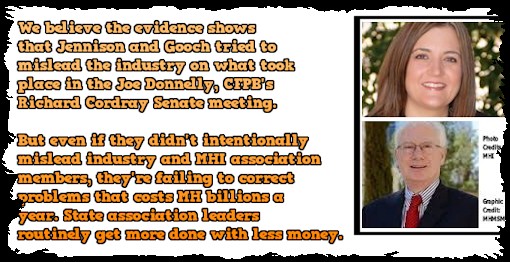
Right or wrong, after the vote of confidence was arranged by Williams, he met outside that MHI meeting room with this author. At that time, our publication and related businesses were MHI members. Others were milling around, and some of them were clearly paying attention to what was being said between Williams and myself.
Later, numbers of state association executives told MHProNews that Williams had strong armed them as a group during a conference call arranged by then MHI senior VP Jason Boehlert. Williams insisted that the so-called Preserving Access to Manufactured Housing Act must be supported by every state association. If Preserving Access wasn’t supported, they would lose 21st’s financial support, per those state association sources.
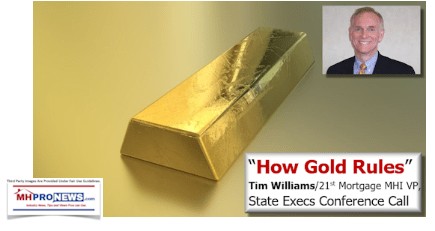
To lose the support of one key part of Berkshire Hathaway may have implied to savvy state executives that they could also lose the support of Clayton Homes. That combination might put several state associations into a rapid decent into insolvency.

How the wink-and-a-nod is arranged beyond that is perhaps less relevant than the point that MHI has essentially become a mouthpiece for a relative small number of dominating brands.
The fact that outside MHI attorneys – such as David Goch or John Greiner – or inside MHI general counsel – such as their prior GC, Rick Robinson, J.D. – will not publicly defend or address those allegations speaks volumes.
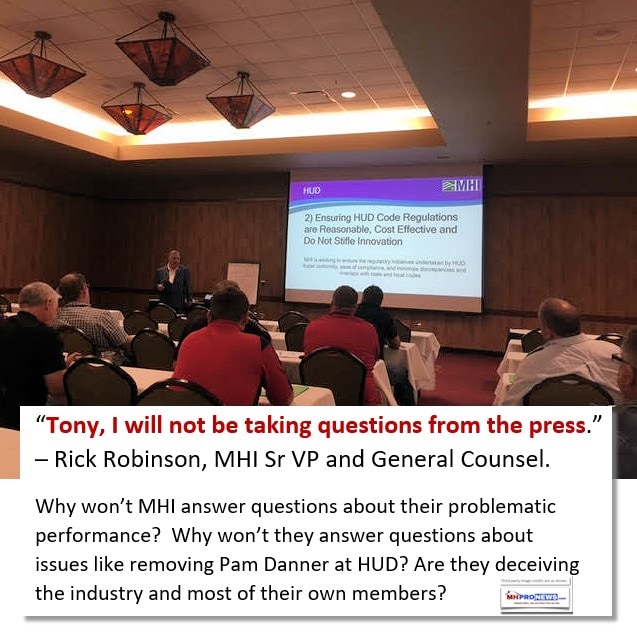
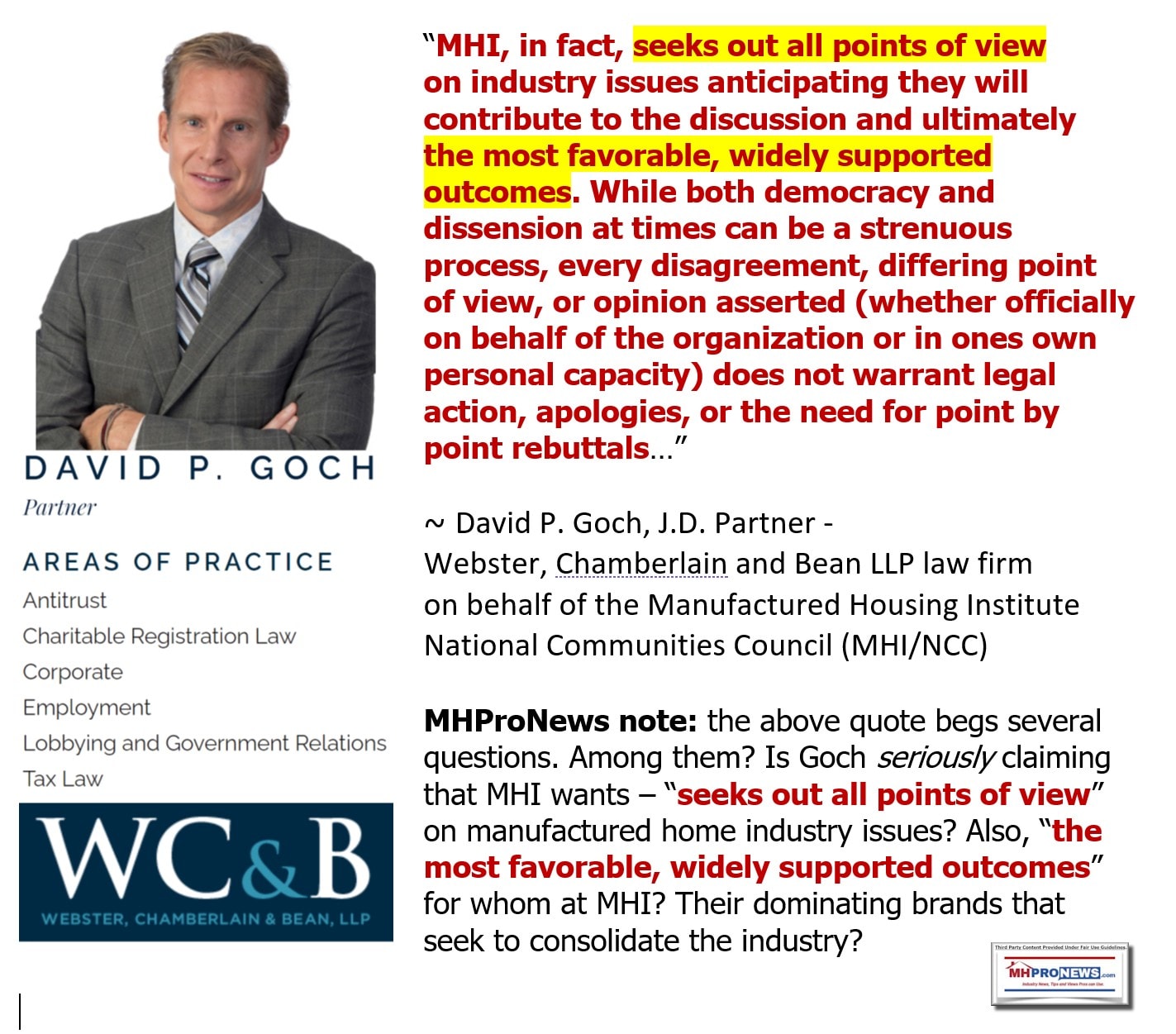
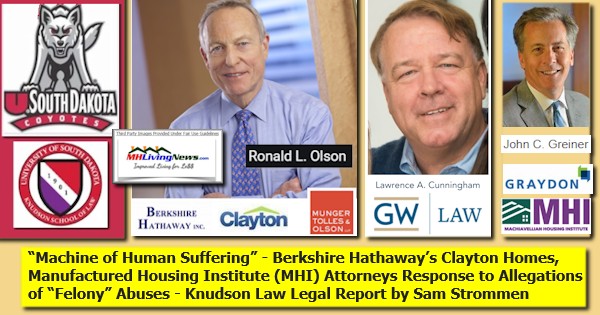
The same could be said of MHI’s past and current CEOs.
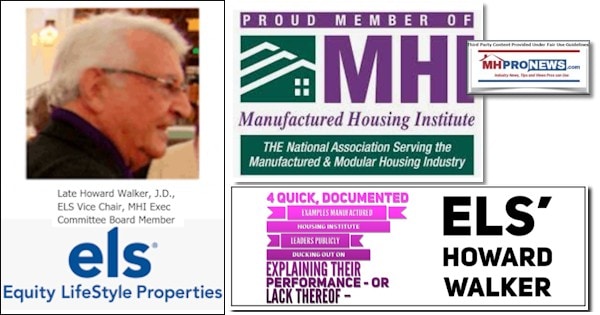
If they will not defend their own efforts and reputation publicly, why is it a surprise that they won’t defend the industry in anything like the robust method suggested by Tim Williams/21st as part of their announcement that they would hire a PR person.
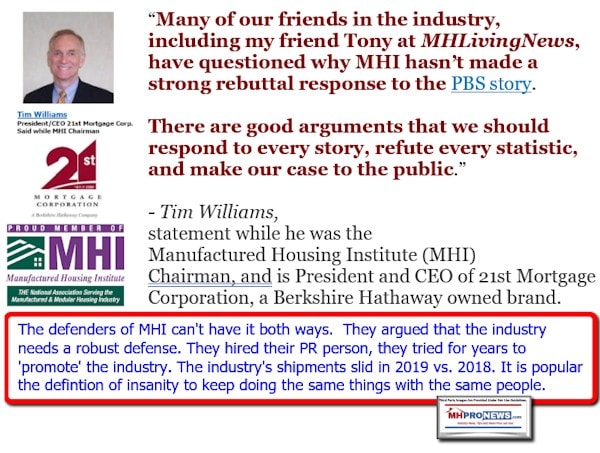
It is simply not plausible that MHI is as inept as they appear to be.
Using the principle of Occam’s Razor, what is the most plausible is also the most likely explanation. Given that several of MHI’s publicly traded corporate leaders have said in their own investor pitch-decks that they want consolidation of the industry, isn’t consolidation easier when the industry is modest and growing only in fits and starts from a low point that was arguably engineered by two of their dominating members?
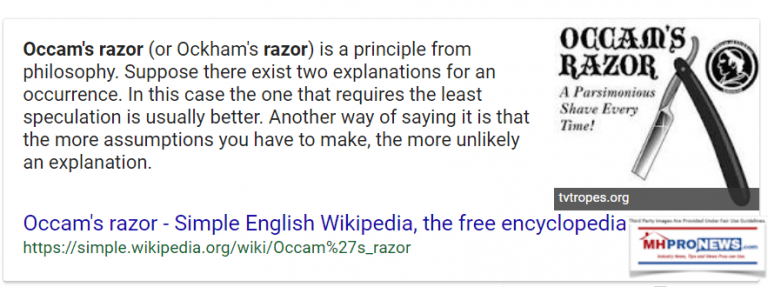
Indeed, the only thesis that makes sense is that a combination of outside forces, which to some extent are abetted by MHI and their corporate leaders, can possibly explain why the industry is underperforming during an affordable housing crisis. People may lie, individuals or even organizations may try to spin the truth. But facts and evidence do not fib.
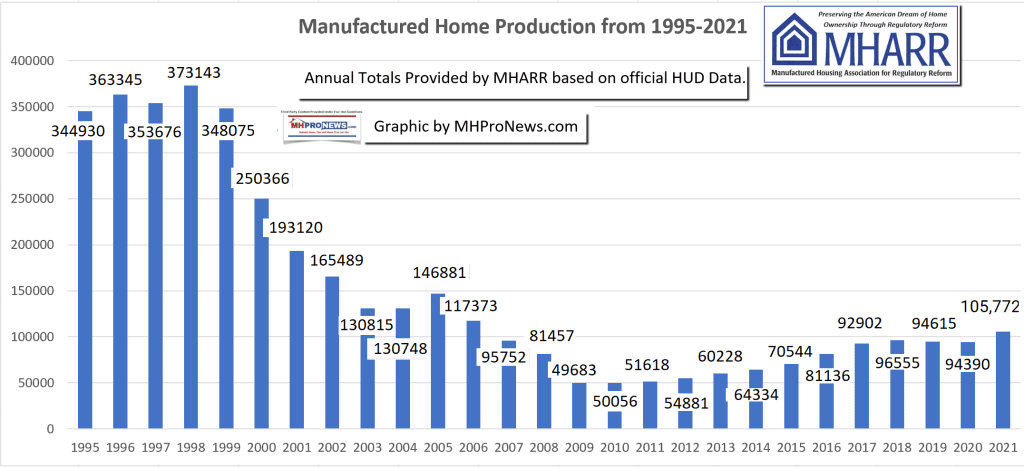
We noted early on in this column that anyone who has been in manufactured housing a dozen years or fewer have never seen the industry soaring. The graphic above makes that point plain.
But the next infographic illustrates why the obvious conclusion is arguably the correct one. Namely, that MHI has essentially looked the other way while bad news boiled over year after year. Indeed, that bad news is often from MHI’s own members. Isn’t that obviously the opposite of what MHI’s so-called Code of Professional Conduct requires? Isn’t the frustration of the MHI insider, quoted above and linked here again for convenience, supported by the overwhelming preponderance of evidence?
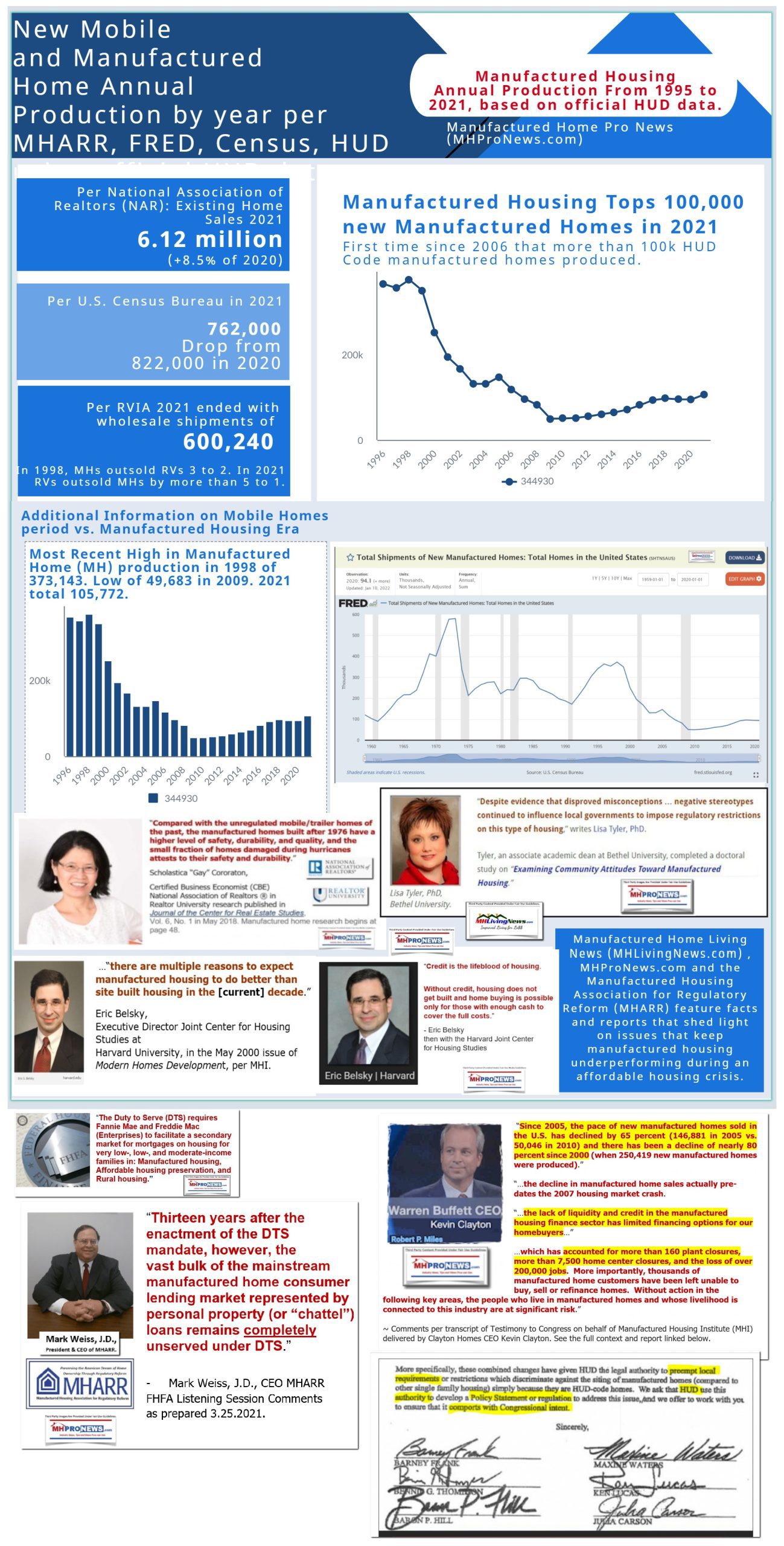
It is MHI member Frank Rolfe, who may be part of the effort linked below, who openly proclaimed that he has never seen an industry fail to defend its own product as MHI has failed to defend manufactured housing.

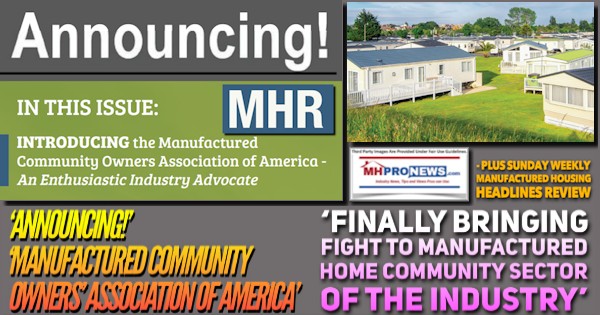
However problematic his own business practices may be, he has from time to time made bold proclamations that fit the thesis presented here. Namely, that MHI has oddly taken a hands-off stance, all while claiming to be the industry’s most robust advocate. The Arlington, VA based MHI can’t have it both ways. Either they are effective at robustly growing the industry and defending it, or they aren’t.
When MHI’s own past CEO has proclaimed that the industry could and should be doing 500,000 new manufactured homes annually, it is hard for MHI to now claim otherwise.
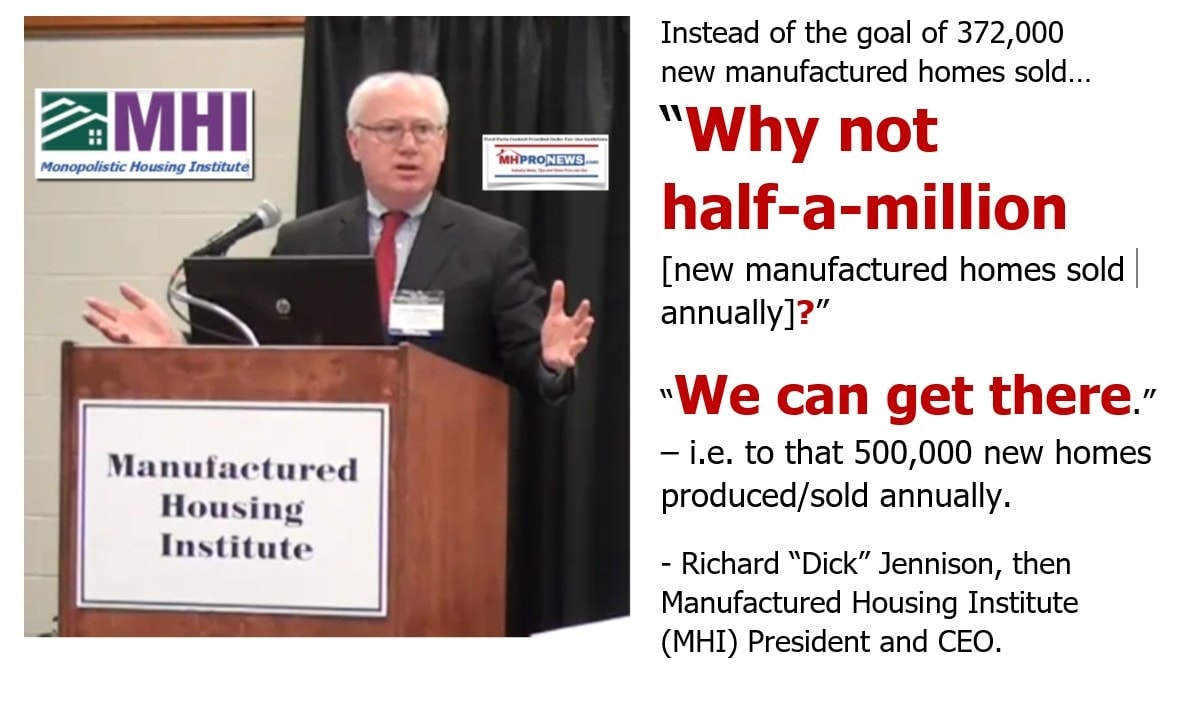
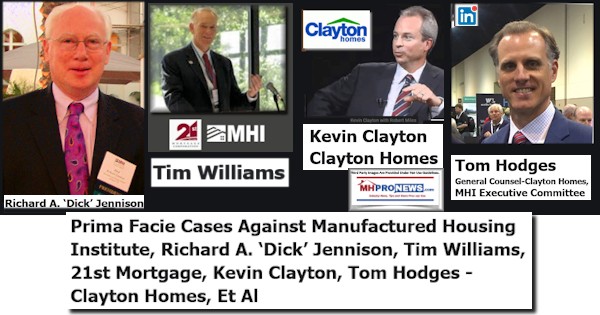
After reviewing the report linked below, Sandy Garrett, J.D., Chief Disciplinary Counsel for the Board of Professional Responsibility of the Supreme Court of Tennessee said the following in an email to MHProNews.
“Mr. Kovach: In response to your question, the breadth of your complaint is much broader than the parameters of the Rules of Professional Conduct. Tennessee Supreme Court Rule 9 Section 32.9 allows the Board of Professional Responsibility to report evidence of a crime to law enforcement.” Restated, Garrett is apparently saying that Hodges (and by extension, MHI?!?) appear to have committed a crime(s).
Attorney Garrett later wrote in a separate email: “As stated in the November 9, 2021 letter to you, this matter appears to be more appropriately addressed by elected officials and/or the U.S. Department of Justice.” Garrett could have said, there is no evidence of any wrongdoing. But on two separate occasions, via email, Garrett instead said there is “evidence of a crime(s)” and that “elected officials” and/or “the U.S. Department of Justice” should be appraised of these allegations.

Words to the Wise Among the Fearful in MHVille – Summary and Conclusion
Kevin Clayton’s comments below are arguably an understatement of the actually numbers of lost retail centers. Clayton’s claimed factories closed count is likely far closer to being accurate. Ironically, it is Ken Corbin who made the statement 5 years ago in Deadwood that manufactured housing has lost no fewer than 10,000 manufactured home retailers. Other sources put it at more like 20,000 retailers lost.
No normal person wants to be eaten by a lion, period.
But is it better to be among the last ones eaten by a killer cat or other predator? Hardly. To know that your days are numbered is a difficult way to live out your life. Professionally dying – watching your business be closed or to be forced to sell out for less than your location may actually be worth – is a kind of business death too. It is in that sense that the featured image at the top is suggesting. Rows and rows of graves marked by white crosses is not why people get into business, is it?

The heavy loss of retailers preceded the significant losses among manufactured home community operators. Indeed, the case can be made that taking out independent retailers by the thousands is what contributed to the loss of production centers and later the thousands of lost once independently owned communities.
The solution for the industry’s remaining independents in the post-production realm ought to be clear. If they do not begin to organize and pushback publicly, they will surely die or be bought out individually. Is such a battle for the future of manufactured housing inevitable? Is it worth the obvious risks involved? Those questions will be explored in our Easter Sunday weekly recap and related column.
Stay tuned. But as a quick teaser, the case can be made that if MHProNews/MHLivingNews can increasingly confront MHI and their dominating corporate masters and live to tell the tale for years, then others can do so successfully too. ##
Additional Research and Commentary on these topics.
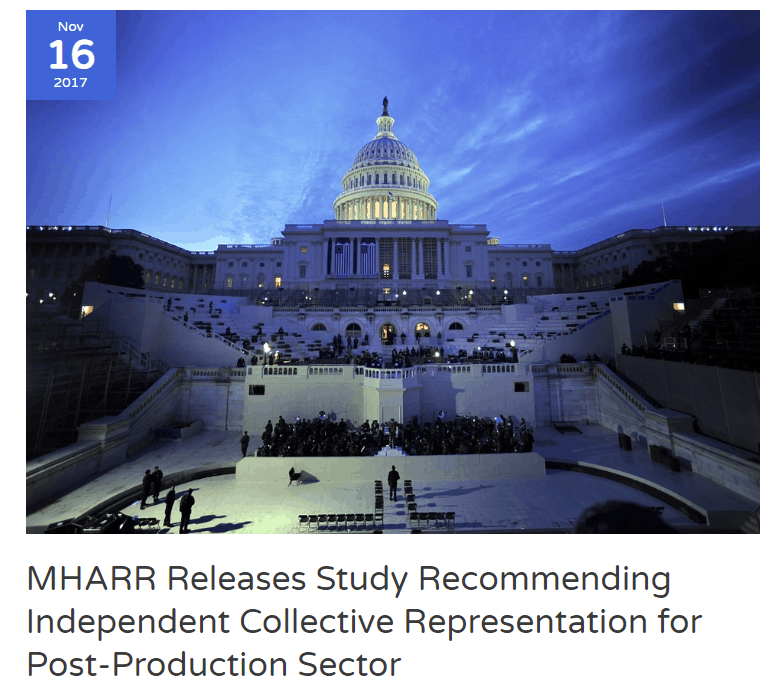
The reason that there have been periodic calls for a new post-production trade group is arguably a vote of no-confidence in MHI. Given industry underperformance and a range of troubling image and legal issues, perhaps the only wonder is that a group of white hats with sufficient chutzpah and horsepower haven’t already done what has been tentatively tried several times in recent years.
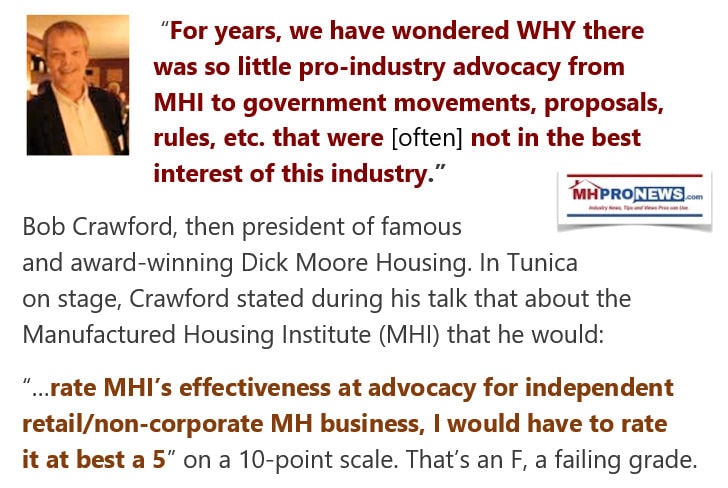
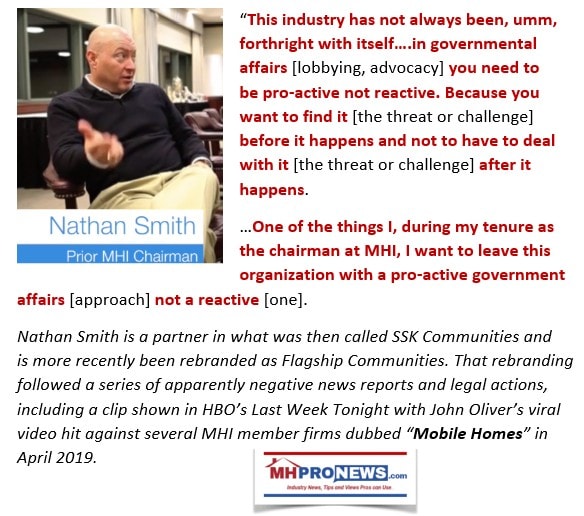
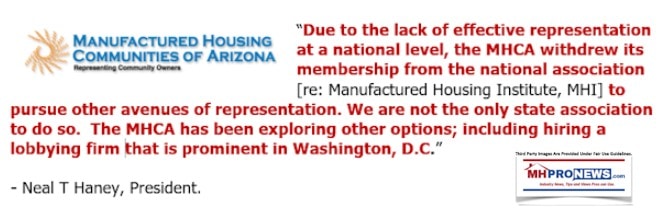



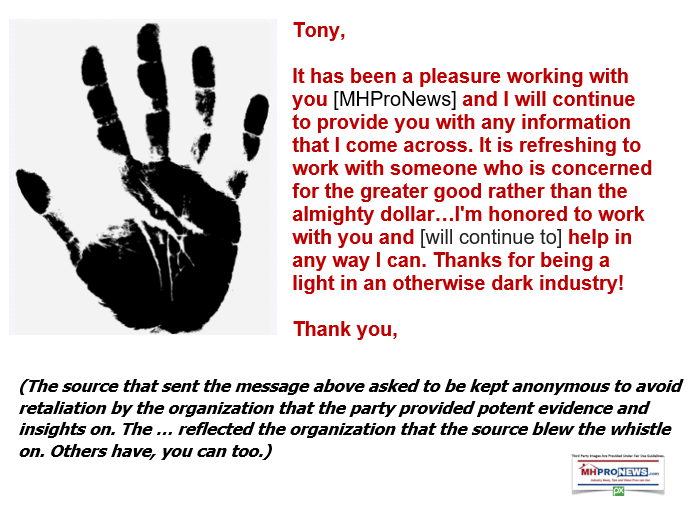
Again, our thanks to you, our sources, and sponsors and God for making and keeping us the runaway number one source for authentic “News through the lens of manufactured homes and factory-built housing” © where “We Provide, You Decide.” © ## (Affordable housing, manufactured homes, reports, fact-checks, analysis, and commentary. Third-party images or content are provided under fair use guidelines for media.) (See Related Reports, further below. Text/image boxes often are hot-linked to other reports that can be access by clicking on them.)

By L.A. “Tony” Kovach – for MHProNews.com.
Tony earned a journalism scholarship and earned numerous awards in history and in manufactured housing.
For example, he earned the prestigious Lottinville Award in history from the University of Oklahoma, where he studied history and business management. He’s a managing member and co-founder of LifeStyle Factory Homes, LLC, the parent company to MHProNews, and MHLivingNews.com.
This article reflects the LLC’s and/or the writer’s position, and may or may not reflect the views of sponsors or supporters.
Connect on LinkedIn: http://www.linkedin.com/in/latonykovach
Related References:
The text/image boxes below are linked to other reports, which can be accessed by clicking on them.
